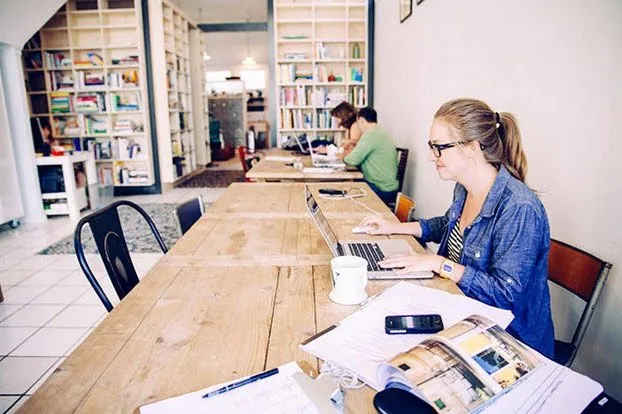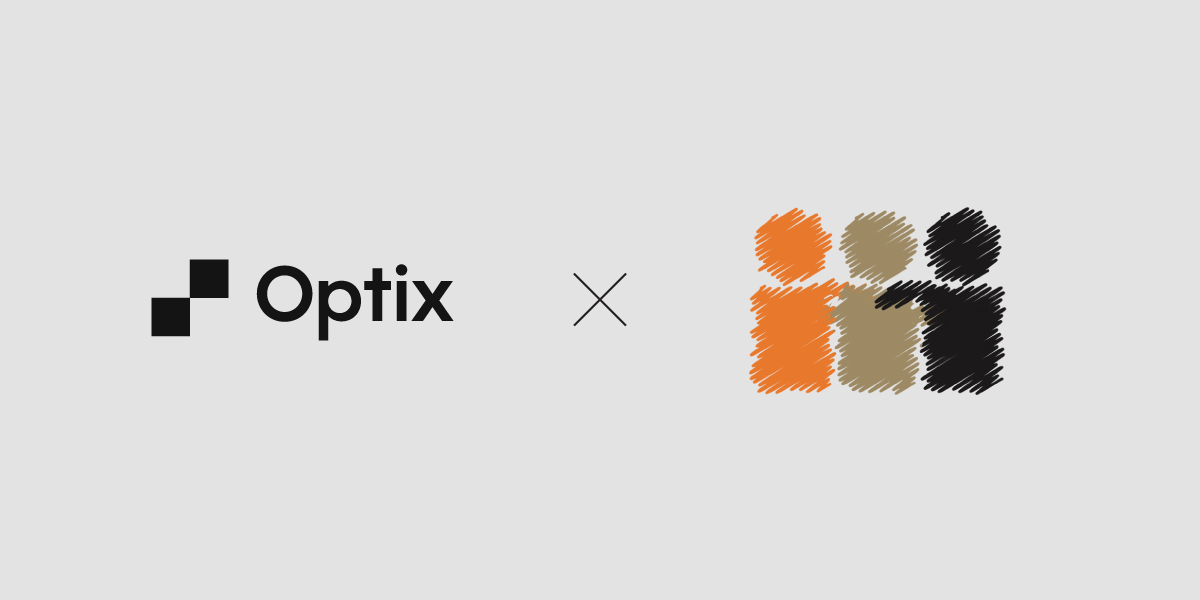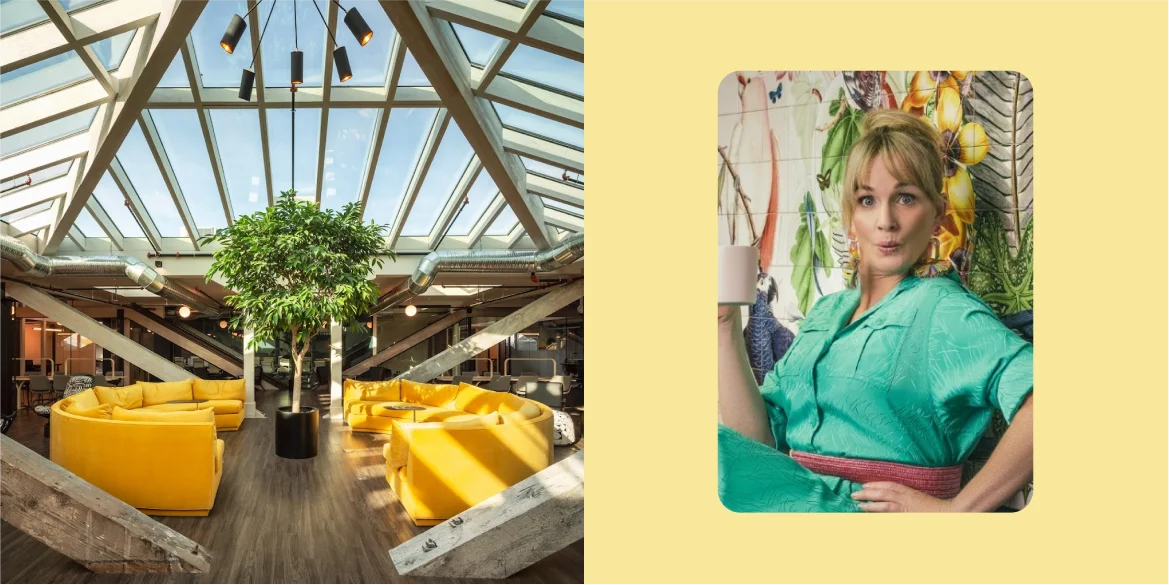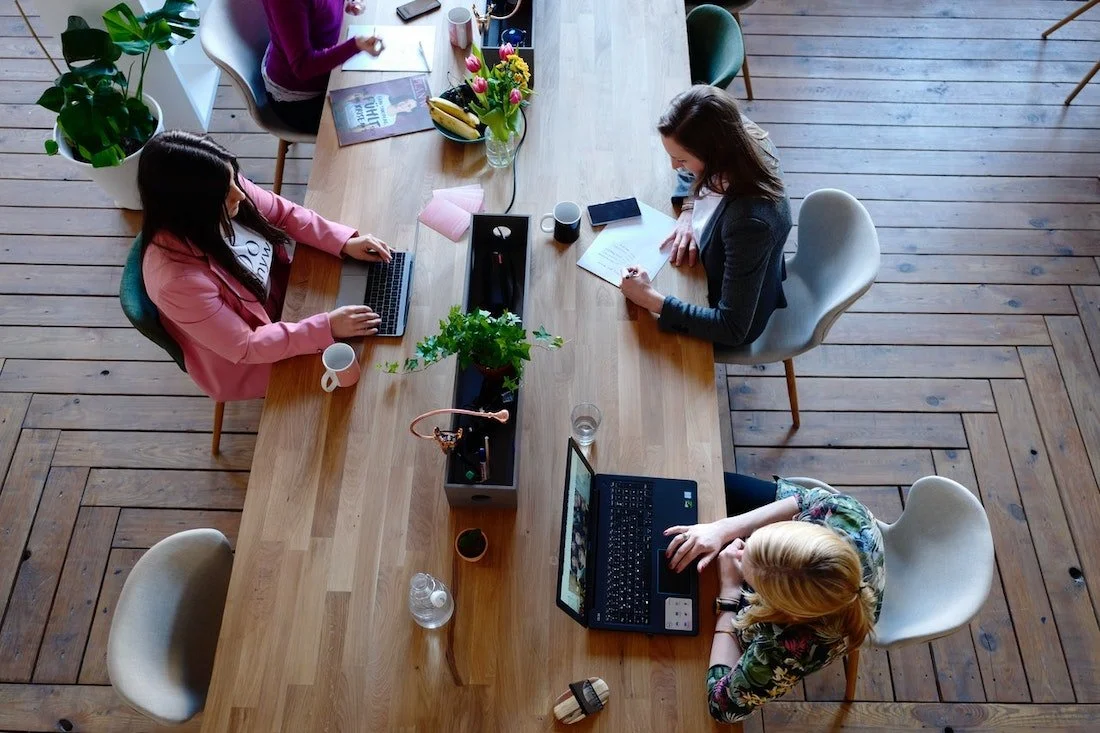
A place that harbors collaboration and camaraderie, Makeshift Society has built up a diverse community of freelancers, independent business owners, and small teams. With an extensive background in consulting and freelance work, Rena is the ultimate creative placemaker, and we asked her to share with us her story with Makeshift Society.
What was the inspiration behind the name Makeshift Society?
Makeshift Society is a name that took us a really long time to land on. We wanted a name that emphasized the community more than the work. Of course, being a coworking space work is going to be involved, but we asked ourselves what may be some deeper reasons why people might be attracted to us, which is why the word “Society” is in it – that was pretty important to us. We’re looking for creatives that are quirky, interesting and like wordplay, so makeshift seemed like a good word to tag onto that.
What are some elements you feel make Makeshift Society unique from other coworking spaces?
The average new coworking space is around 10 or 20 thousand square feet, and these are really set up more like a professional office in my opinion – there’s distinct workspaces with doors that lock and certain kinds of amenities – it’s really an immense thing. Our San Francisco location is almost a thousand square feet, and our New York location is about four thousand square feet – so we are smaller, that’s one difference.
We really want our members to take more ownership of the space, and to propose to us stuff that they’d like to see happen. We get questions like “Can I move this furniture? Can I do a photoshoot in the corner?” etc., and we try and say ‘Yes’ as much as possible. I think that’s a big difference for us – we’re mostly open plan and we don’t necessarily have private spaces. Also, our focus on freelancers is really different. My background in in retail and with makers, and also with creative web design, so the people we tend to attract are more from that realm, rather than startup. We are trying to work with people who have existing businesses, and just need a bit more support.
How would you compare and contrast the dynamics between the San Francisco and Brooklyn Makeshift Societies?
Brooklyn is newer, bigger, and looks a bit more professional – it’s this very ‘Brooklyn’ warehouse with very high ceilings, great natural light, and concrete floors. San Francisco is a very typical San Francisco store front space with mouldings and big windows -it’s a very cozy space with couches and bright colors, with nooks all over the place. In New York, the people in our space tend to be architects, interior and graphic designers, and writers. In San Francisco we have a little bit more of the maker community, photographers, bloggers – so it’s just slightly different. But I think if you got them all together, they’d all be really happy with each other.
What challenges do you find owning and managing a coworking space?
People are always needing business advice, especially independent creatives who have to do everything themselves. But sometimes either due to lack of money or time, they just aren’t able to do everything themselves, so a lot of what we do is to try and hook people together to give a little extra help and support.
I guess the second thing is because we have freelancers mostly, sometimes they’ll end up taking jobs – they’ll float out and then they might come back later, so we have to be really careful about turnover.
Another thing is space to do stuff – because our space is so small, people can’t really store big equipment or a lot of gear. We aren’t able to have a machine shop or a bunch of things that’d be lovely to do especially for this population but we just can’t set it up, so what we do instead is we try and have classes in the evening like a ceramics building class – so that’s sort of our sweet spot. I think people want more fun amenities and easier ways to find out who else is out there that can help them out, so those who speak up definitely get helped more often. We’re trying to find more passive ways for people to get help when they’re a little bit shy about speaking up too.
Tell us a bit about the Residency Program at Makeshift Society- what gave you the inspiration to get the program underway, and could you share with us some examples of alumni who have been a part of the residency program?
The residency program stems out of our desire to support people who have a great idea for a project but have never had the resources or space (physical space or brain space) to work on it. It’s also a way for us to give back to people who might not be able to afford our membership normally.
We’ve had a lot of great folks come in and it just gives them room to flesh out an idea for a new program they’ve wanted to do. For example, we’ve had an attorney come in as part of the residency, and she wanted to prototype a program that would make the legal aspects of creative practice easier and simpler for creative independents. We’ve also had some people who do more work in a social setting. We’ve had this one guy that started his own program taking a stack of postcards down to neighbourhoods that most people think are scary or they don’t want to go to. He had people who live there write notes on the postcards to anonymous people and then he mailed them to people he found in the phonebook. For example, things like “Hey I live in the Tenderloin, and I really love my neighborhood, and you should come visit sometime, it’s not as crazy as you think” – and he’ll mail stuff like that to different people in the neighbourhood and got great feedback about it – so he did work like that out of our space and now he’s expanded that to other programs around the country.
What are your thoughts on the future of work?
I think it’s fun but it’s scary. The future of work is a lot more people like the people that come and work at Makeshift – people working for themselves and trying to figure stuff out. And the reality is things are moving towards working decentralized, but I am getting a real firsthand look at what people are afraid of – they’re afraid of cash flow, what happens if there’s too many competitors in the field, what happens if they’re not all totally up on all their social media, what if they’re not in the right time or place to get work – stuff like that. So we’re trying to figure out ways for people to come together and mitigate those negatives, and getting programs or events together that will inform people about the future of work and things that they can do about it.
Describe your perfect donut.
I am a donut purist so my ideal donut is a glazed old fashioned. I feel like if I go into any town and I find a donut shop, that’s the first thing I look for – it’s kind of like the benchmark donut for me. If they get that one right, then i will trust them and try other donuts next time. I just feel like its got the perfect texture – it kind of has this crackly crispiness on the outside, and this tender gooey thing going on the inside, so i really like the contrast, and then just a little bit of glaze with enough sweetness. It’s my perfect donut and thats all I need.
About the Optix Blog Series ‘The Future of Work With…’
‘The Future of Work With…’ is a blog series profiling members of the Optix community. We are speaking with our diverse network of entrepreneurs, business travellers, industry thought leaders, freelancers, and flexible workplace operators, and sharing their stories and experiences on how they dream up a more flexible future for work.
Originally published on February 24, 2015 at sharedesk.net.



